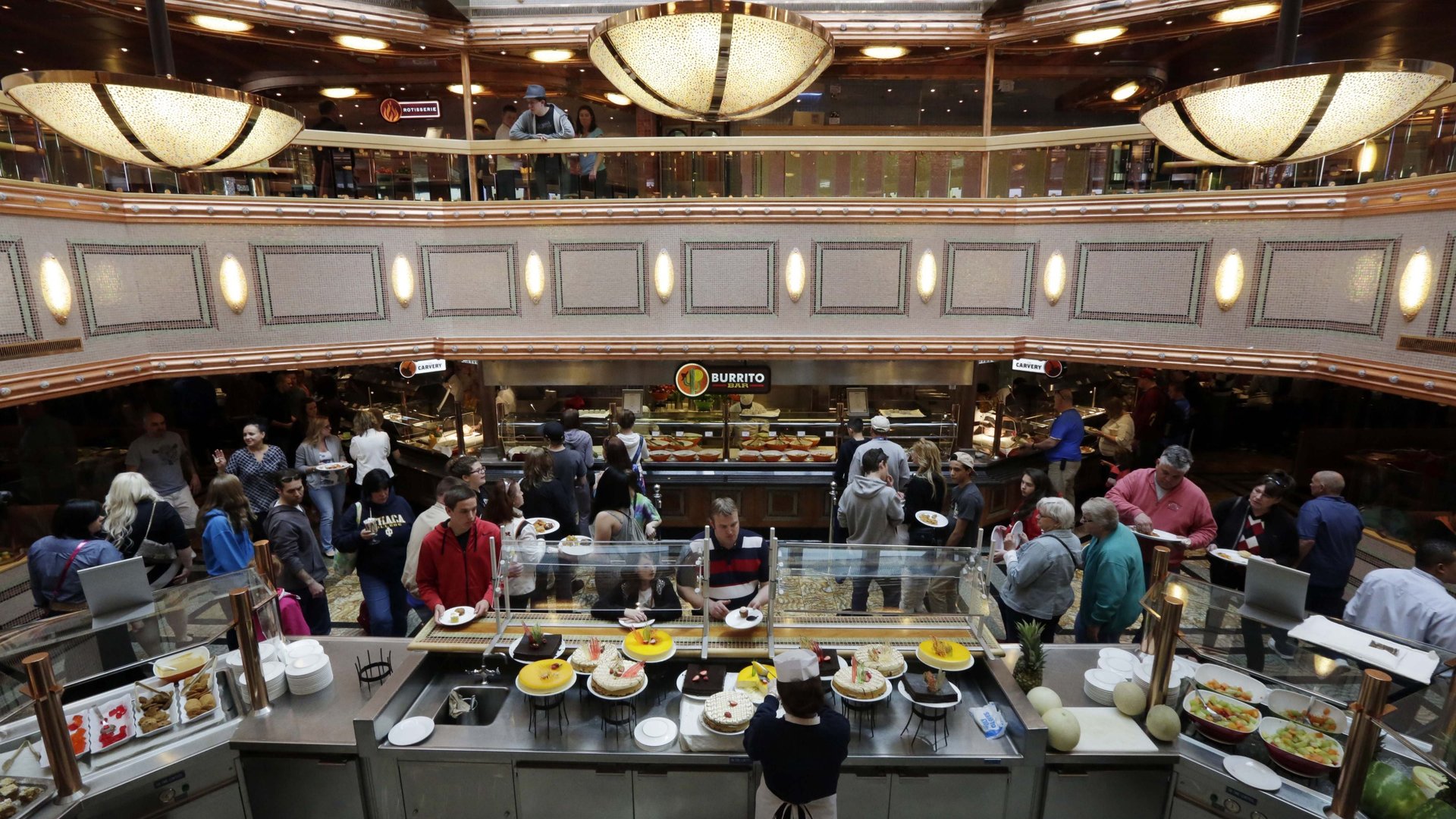Why it tastes better when it costs more
It’s a surprisingly democratic phenomenon. Both wine drinkers and all-you-can-eat buffet gourmands report feeling more satisfied with selections if they pay a higher price. The latest research along these lines is from a forthcoming paper from the Journal of Sensory Studies, which finds that diners who paid a higher price—$8—for an all-you-can-eat pizza buffet, rated their pizza as 11% tastier than those who paid the cut-rate price of $4. But the same phenomenon applies at the higher-end.


It’s a surprisingly democratic phenomenon. Both wine drinkers and all-you-can-eat buffet gourmands report feeling more satisfied with selections if they pay a higher price. The latest research along these lines is from a forthcoming paper from the Journal of Sensory Studies, which finds that diners who paid a higher price—$8—for an all-you-can-eat pizza buffet, rated their pizza as 11% tastier than those who paid the cut-rate price of $4. But the same phenomenon applies at the higher-end.
For example consumers of wine have been shown to allow prices to push their pallets in different directions.
In fact, there’s a rich vein of economic research in which the various ways prices influence perceptions of quality in goods in a manner that disrupts the traditional economic gravity of downward-sloping demand curves. (That’s the economic tenet that when prices fall, demand rises.)
In other words, demand often rises when prices rise. A seminal study of the phenomenon was published in 1949, when a man by the name of Oswald Knauth undertook an in-depth analysis of pricing trends of women’s hosiery, in which one retailer reported large burst of sales when he did nothing more than raise the price of stockings to $1.14 from $1.00. Why? The price hike “suggested higher value” to customers (PDF).
This simple study of stockings eventually helped give rise to large-scale attempts to understand the simple short-cuts, known as heuristics, that consumers often used to guide their purchases. Customers often resort to these rules-of-thumb when the feel they’re unable to make a well-informed decision about a product. In this case, the operative phrase is, “you get what you pay for.” The theory being that consumers assume the higher price is indicative of higher production costs—better ingredients, more highly skilled labor—or strong demand for the item in question.
On the other hand, other research indicates that consumers are less likely to rely on these sorts of shortcuts if they are more familiar with the product in question.